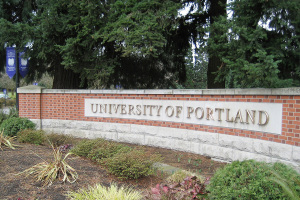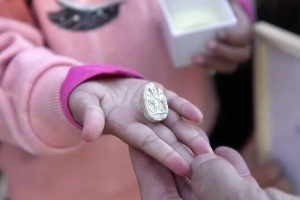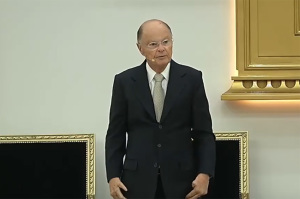Why Are Mormons Rising in Business, Politics?
For the first time America has two Mormon candidates for president, Mitt Romney and Jon Huntsman, which has drawn the media’s attention to how the Church of Jesus Christ of Latter-day Saints has managed to churn out some of the country’s top business and political leaders.
The spotlight has turned on the Mormons’ Missionary Training Center (MTC) in Provo, Utah, which sends out more than 50,000 Mormon graduates around the world at any given moment. Recent media reports say almost all Mormons who have excelled in business and public life have been trained at MTC.
“I don’t think there’s any more demanding profession than being a Mormon missionary,” the Business Insider website quoted Harvard Business School professor Clayton Christenson, a Mormon, as saying last Friday.
Mormons form less than two percent of America’s population, but many of their members have gone on to become among the most distinguished and recognizable faces in American business and civic life thanks to MTC, which has produced around 1 million graduates thus far, noted Businessweek, which also ran a story on Mormons last month.
Both Mormon presidential hopefuls are alumni of MTC. Romney, former governor of Massachusetts, is running for the White House for a second time and had an estimated worth of around $250 million, as of 2007, as head of Bain Capital. Huntsman, a former Utah governor, negotiated dozens of free-trade agreements as a U.S. trade representative and served as ambassador to China from 2009-2011.
And then there are JetBlue founder David Neeleman, Credit Suisse CEO Eric Varvel, author of The 7 Habits of Highly Effective People Stephen Covey, and former dean of Harvard Business School Kim Clark. The list of distinguished people who graduated from MTC or its earlier incarnations can be long.
The mission experience is “one of the defining opportunities for young men and young women,” Gary Cornia, dean of Mormon-operated Brigham Young University’s Marriott School of Management, told Businessweek.
“It’s an extremely rigorous two-year program: 10-hour days, no TV, no dating, constant rejection. At the same time many American teenagers are relishing their first taste of freedom as college freshmen, these Mormons are entering into the most disciplined period of their lives,” Business Insider said.
It is estimated that roughly 50 percent of American Mormon missionaries go to countries ranging from Eastern and Western Europe to Africa – which gives a rare exposure to Mormons.
Even those Mormons who do not go out as missionaries benefit from simply being a member.
“Mormons depend upon an unpaid ‘lay’ clergy composed of ordinary congregants tapped to lead sermons each week. Congregants don’t just go to church on Sunday, they run the church, filling all the positions from Sunday school teacher to bishop, serving an estimated five to 25 hours each week. At the same time, they are expected to pay a 10 percent tithe on their incomes while encouraged to raise large families. Only those who tithe are given ‘temple recommends,’ passes which are required to enter Mormon temples.”
In March, when Romney and Huntsman were expected to run for presidency, The Economist carried a similar story. In practical matters, it said, Mormonism “seems well adapted to the modern world, for Mormons are, by many measures, disproportionately successful.”
“Harvard Business School, it is often said, is dominated by the ‘three Ms’ (McKinsey, the military and Mormons). Wall Street and the Central Intelligence Agency love to hire Mormons. And Mormons now make up almost 3% of Congress, even though they are less than 2% of the population,” The Economist said. For this, it concluded, Mormons may have their “austere religious practice” to thank.
However, some Mormons who have come out of the group say they weren’t happy. Businessweek quoted a 32-year-old former member, John Schultz, as saying, “Growing up [as a Mormon], there was all this focus on the middle-class lifestyle, on going to college… You had to look a certain way and act a certain way.” The church’s insistence on a middle-class appearance, he charged, was “PR to win mainstream acceptance and recognition as a Christian faith.”
And that’s perhaps the biggest struggle of Mormons. Michael Otterson, the head of Public Affairs of the LDS, acknowledges it. He recently complained on The Washington Post’s On Faith blog, “In the past few weeks the term [“cult” in reference to the LDS] has appeared in articles in the Economist and The New York Times, and also in other newspapers that carry less intellectual heft.”
Will America’s Christian voters overlook Romney’s or Huntsman’s affiliation with the Mormons when they vote for president? That’s another question media and pollsters are trying to explore.





























